Synology RackStation RS2414RP+ review
The RS2414RP+ is Synology’s first 12-bay business rack NAS appliance but is the Atom CPU up to the job?
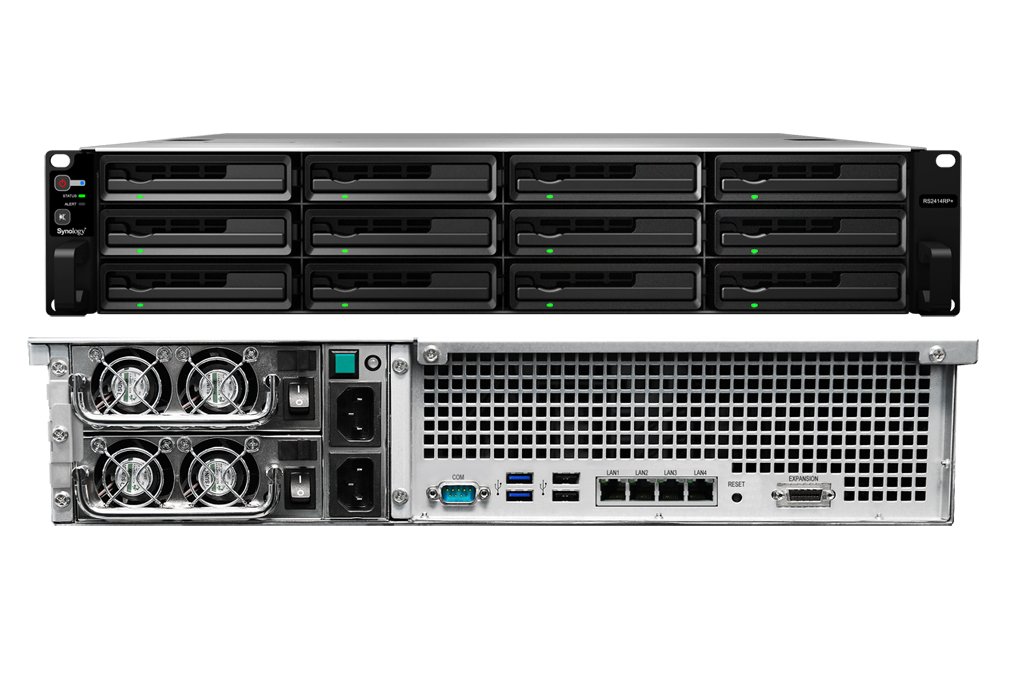
Despite its Atom CPU, the RackStation delivers a fair performance making it a good choice for general NAS and IP SAN duties. It’s reasonable value for a 12-bay box and the latest DSM software is packed with plenty of business features
-
+
Good value and features; Optional 12-bay disk shelf; Dual PSUs
-
-
No 10GbE upgrade option; Read cache needs two SSDs; Atom CPU

The RS2414 models combine high expansion potential with plenty of redundancy and fit in at the top of Synology's family of SMB rack NAS appliances. Both come with four Gigabit ports supporting failover or load balancing and the RS2414RP+ on review included a pair of hot-swap PSUs.
The RS2414RP+ has a basic hardware spec with a 2.13GHz Atom D2700 teamed with 2GB of DDR3 expandable to 4GB. Instead of dual eSATA ports, the appliance has a SAS expansion port which supports one 12-bay RX1214 disk shelf.
The RS2414RP+ supports SSDs as read caches but a lack of PCI-Express slots means you can't upgrade to 10-Gigabit. We found rack mounting a lot easier as Synology supplied us with its optional RKS1314 slide rail kit which costs around 56.
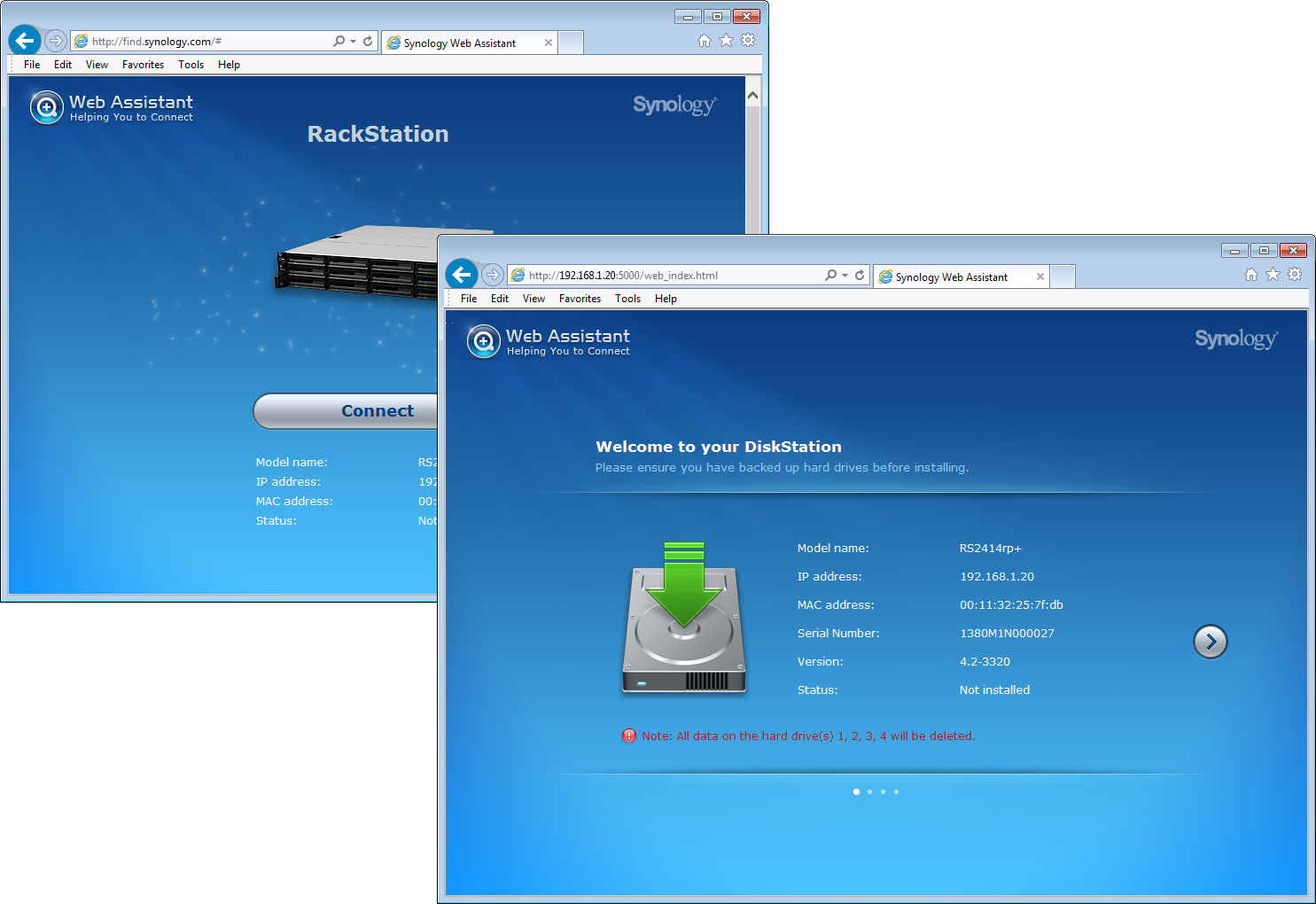
Appliance installation is simplified with Synology's discovery web portal
Installation and drive options
The appliance doesn't have the tool-free drive carriers in the latest desktop models but we had no problems slotting in four 2TB WD Enterprise SATA hard disks. To set up, you need to go to Synology's discovery website, which finds the appliance and applies the latest firmware.
You can create a hybrid array which allows you to mix and match drives of different sizes and makes. We accepted this and our four-drive array took six hours to build although all services were accessible during this process.
If you add an extra drive, it can be designated as a global hot spare for all arrays. However, the read caching feature requires a minimum of two identical SSDs to be installed.
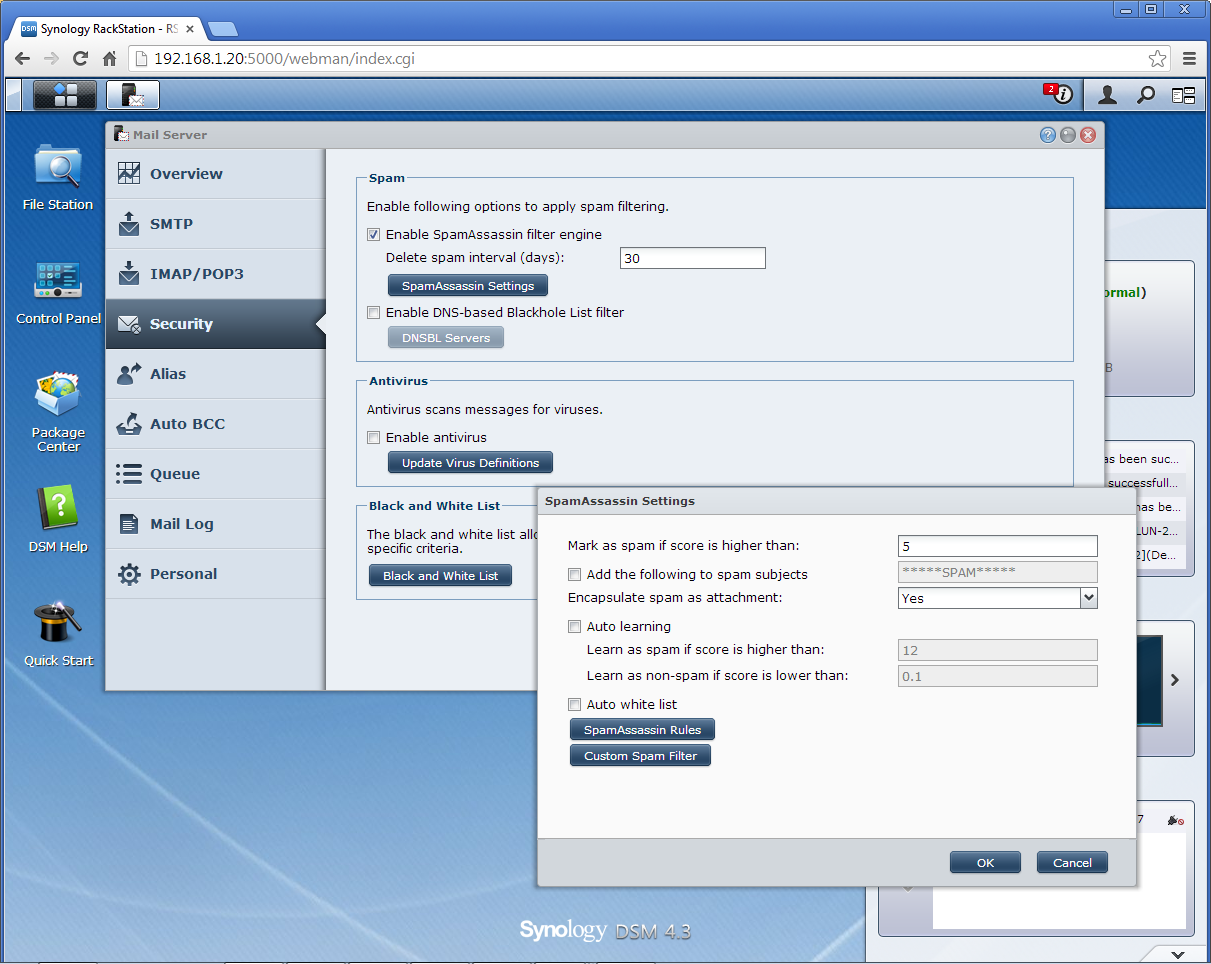
Synology's mail server app gets beefed up with anti-virus and anti-spam
DSM 4.3
Synology's DSM 4.3 support plenty of business features including Microsoft's ODX (offload data transfer). Present in Windows 8 and Server 2012, this reduces host overheads and improves performance when copying data between two iSCSI volumes.
Synology has extended its free ClamAV anti-virus scanner to the mail server app. This also gets black and white lists and a spam filter courtesy of SpamAssassin.
Bandwidth hungry users can be controlled by defining upload and download speed limits. These can be customised for apps such as the File Station and you can apply global limits at the group level.
Cloud services
For cloud backup Synology has replaced its Amazon S3 app with one for Glacier. We tested this using our AWS account, it worked well but the appliance creates its own Glacier vault for each job and won't let you select a pre-existing one.
Synology also offers its own cloud file sharing and backup services. The Cloud Station provides a folder syncing service between a user's local folder and a predefined folder on the appliance in the user's home directory.
Up to 32 file versions are supported and users can log in to the appliance, view their own files and pick those they want to restore. A single shared folder on the appliance can also be synced to multiple Cloud Station users and all traffic encrypted.
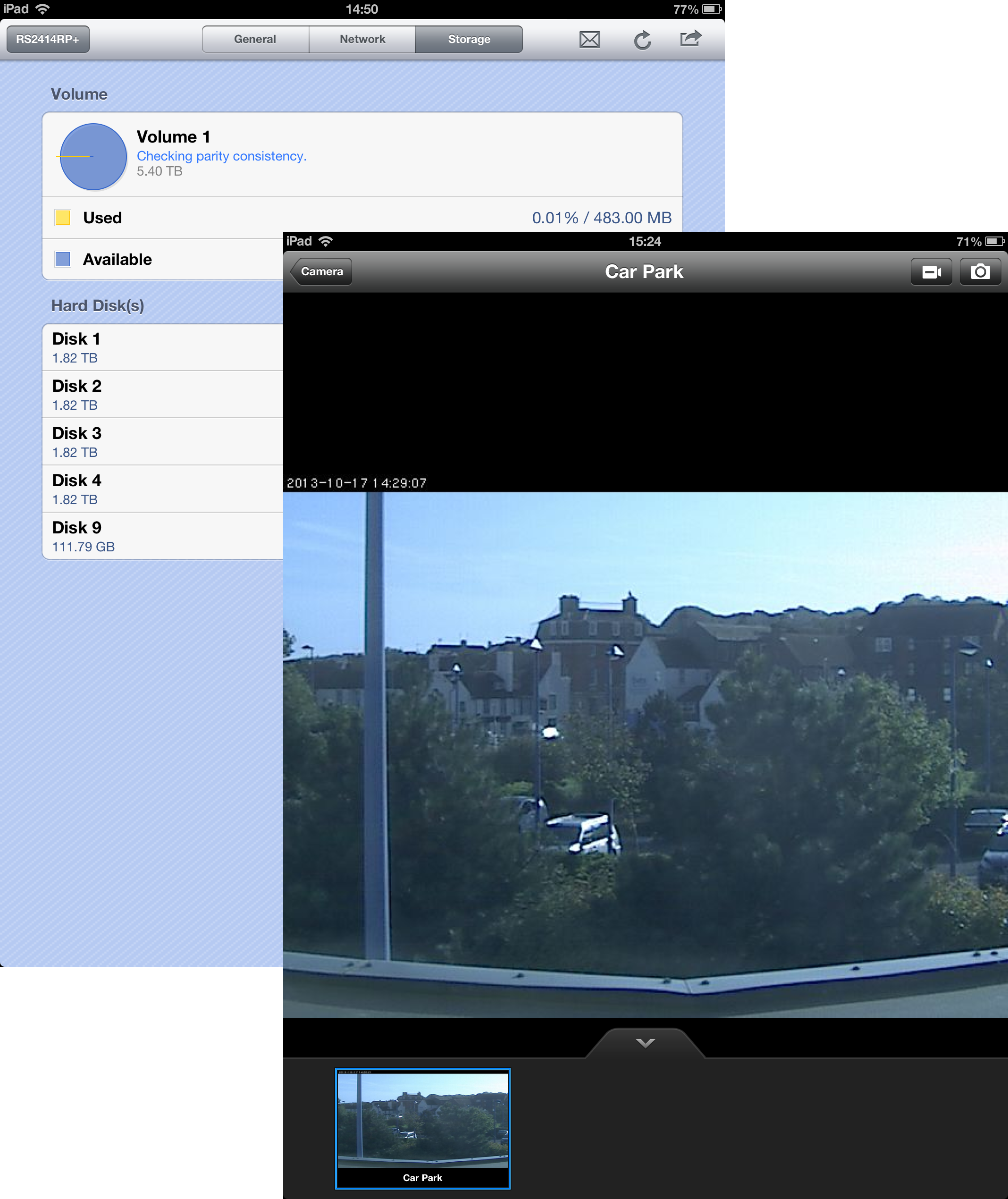
Synology's iOS apps offer plenty of useful tools for accessing the appliance
There's an app for that
Synology provides plenty of mobile apps which we tested on the iPad 4. The DS Finder app discovers appliances on the LAN and provides basic monitoring tools. To enable remote access, you'll need to set up Synology's DDNS services and port forwarding on your router.
DS Cloud is used to sync folders between your mobile device and the appliance. We found this worked fine using the Cloud Station Quick Connect ID and from the app's interface, we could choose which shared folders on the appliance we wanted to include.
We could browse files stored on the appliance using the DS File app and access Synology's Surveillance Station using DS Cam. This provides a tidy interface from where you can select IP cameras, watch their live feeds, take snapshots and call up video recordings.
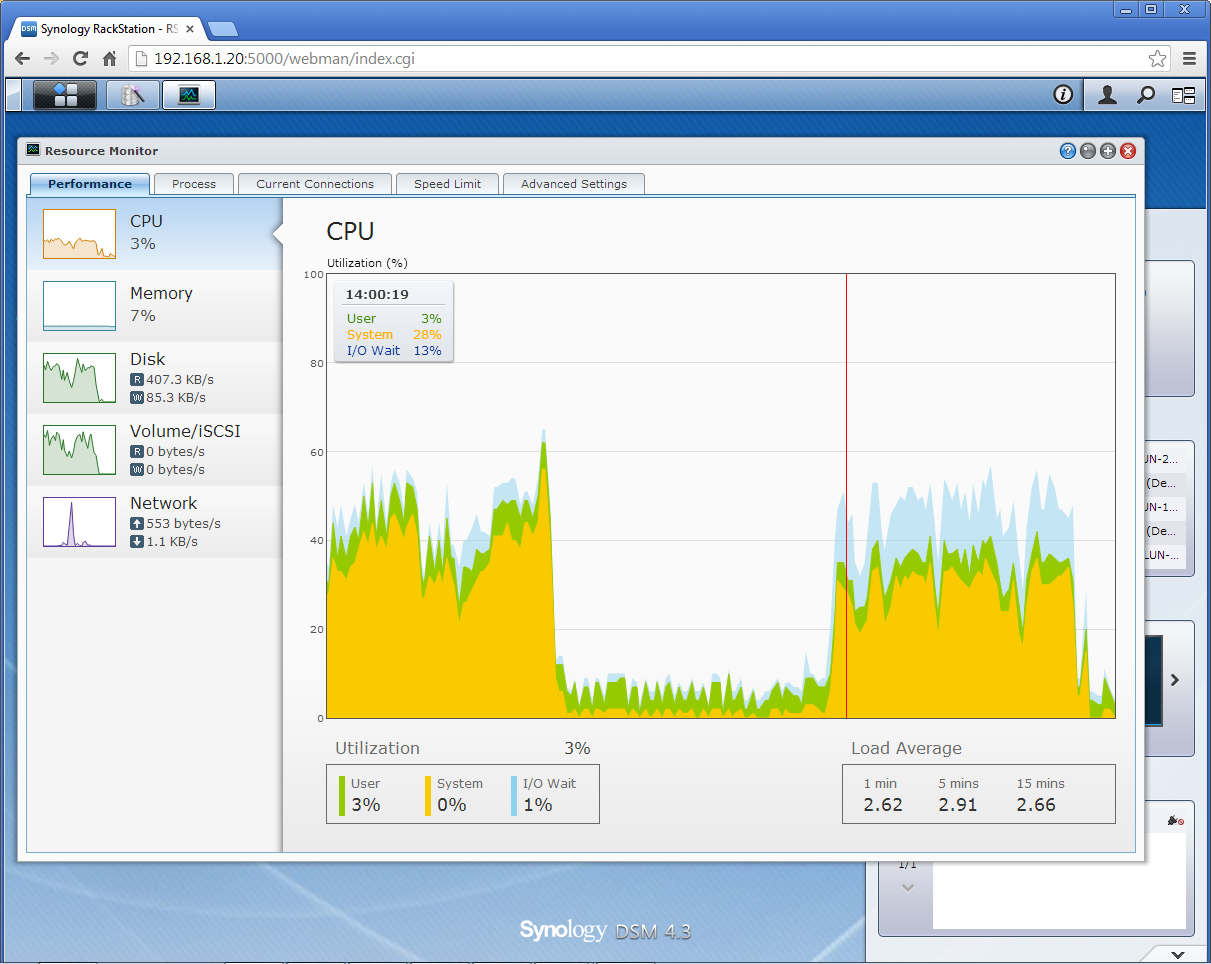
A non-ODX copy to the left and an ODX enabled copy to the right even the appliance benefits from it
Performance and ODX
With the same underlying hardware as Synology's DS1813+ (web ID:20048), performance is similar. Drag and drop copies of a 2.52GB video clip returned read and write rates of 106MB/sec and 101MB/sec while copying a 22.4GB folder of 10,500 small files to a share averaged 75MB/sec.
We tested ODX performance by attaching two iSCSI LUNs to our Windows Server 2012 test system and placing our 22.4GB data mix in the first. After disabling ODX support in the registry, we used Windows Explorer to copy the test data to the second volume.
This returned an average speed of 52MB/sec and CPU utilisation on the host server hovered around 8 per cent. With ODX enabled, speed increased to 80MB/sec and host CPU utilisation dropped away 3 per cent.
Microsoft's technology also benefits non-ODX copy. We saw an appliance CPU utilisation of 45-50 per cent which dropped to around 35 per cent with ODX in action.
Conclusion
The Atom CPU acquitted itself well in our performance tests but will limit the appeal of the RS2414RP+ for high-performance applications. It doesn't support 10GbE upgrades but NAS and IP SAN features are good and the drive count can be doubled with the optional disk shelf.
Verdict
Despite its Atom CPU, the RackStation delivers a fair performance making it a good choice for general NAS and IP SAN duties. It’s reasonable value for a 12-bay box and the latest DSM software is packed with plenty of business features
Chassis: 1U rack
CPU: 2.13GHz Atom D2700
Memory: 2GB DDR3 (max 4GB)
Storage: 12 x hot-swap 2.5/3.5in SATA drive bays
Array support: RAID0, 1, 5, 6, hot-spare, JBODs, Hybrid
Network: 4 x Gigabit
Other ports: 2 x USB3, 4 x USB2
Expansion: 1 x SAS port
Power: 2 x hot-swap 400W PSUs
Management: Web browser
Software: Synology Assistant, Download Redirector and Data Replicator 3
Get the ITPro daily newsletter
Sign up today and you will receive a free copy of our Future Focus 2025 report - the leading guidance on AI, cybersecurity and other IT challenges as per 700+ senior executives
Dave is an IT consultant and freelance journalist specialising in hands-on reviews of computer networking products covering all market sectors from small businesses to enterprises. Founder of Binary Testing Ltd – the UK’s premier independent network testing laboratory - Dave has over 45 years of experience in the IT industry.
Dave has produced many thousands of in-depth business networking product reviews from his lab which have been reproduced globally. Writing for ITPro and its sister title, PC Pro, he covers all areas of business IT infrastructure, including servers, storage, network security, data protection, cloud, infrastructure and services.
-
 AI is helping bad bots take over the internet
AI is helping bad bots take over the internetNews Automated bot traffic has surpassed human activity for the first time in a decade, according to Imperva
By Bobby Hellard Published
-
 ‘We are now a full-fledged powerhouse’: Two years on from its Series B round, Hack the Box targets further growth with AI-powered cyber training programs and new market opportunities
‘We are now a full-fledged powerhouse’: Two years on from its Series B round, Hack the Box targets further growth with AI-powered cyber training programs and new market opportunitiesNews Hack the Box has grown significantly in the last two years, and it shows no signs of slowing down
By Ross Kelly Published
-
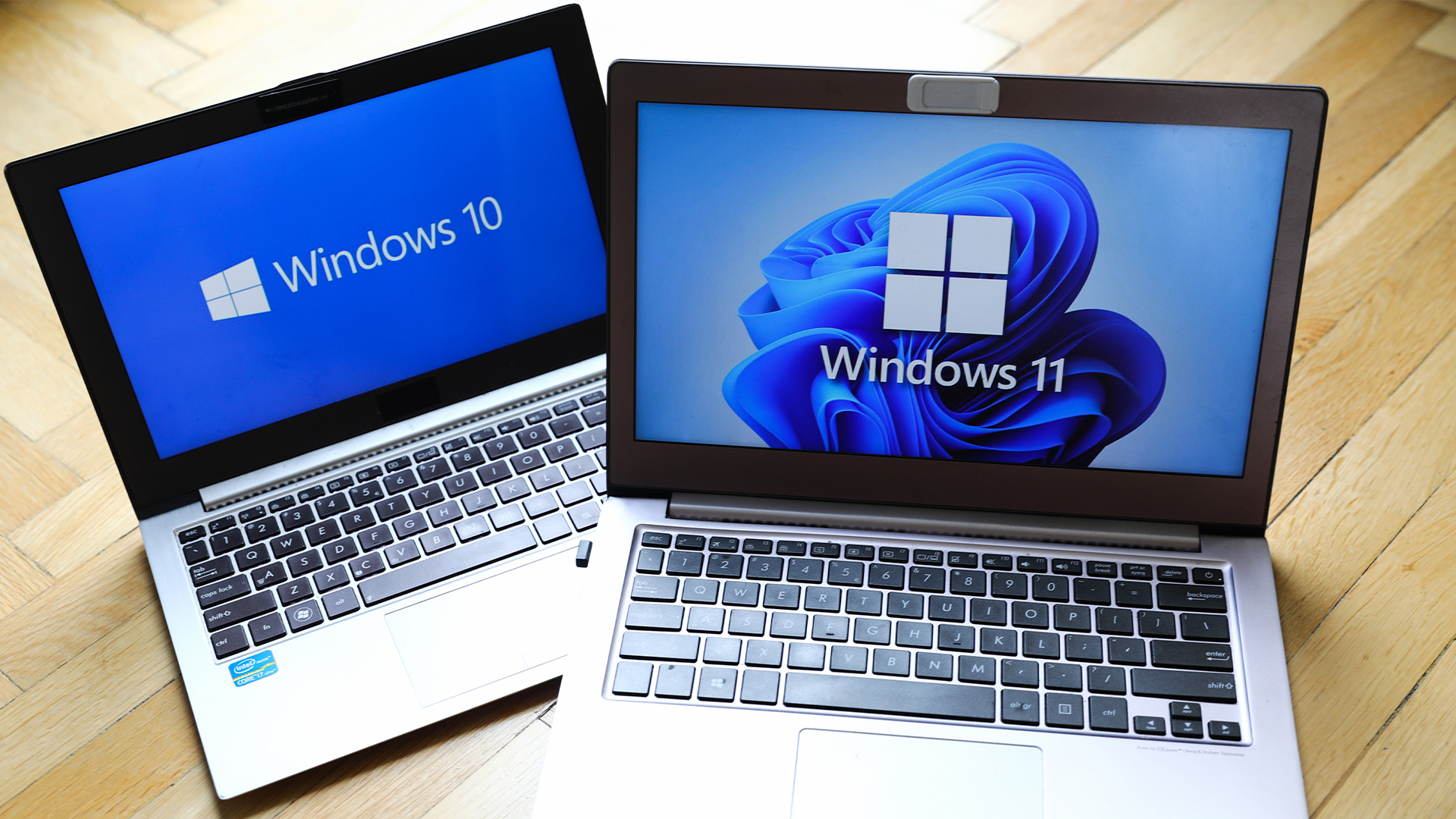 Dragging your feet on Windows 11 migration? Rising infostealer threats might change that
Dragging your feet on Windows 11 migration? Rising infostealer threats might change thatNews With the clock ticking down to the Windows 10 end of life deadline in October, organizations are dragging their feet on Windows 11 migration – and leaving their devices vulnerable as a result.
By Emma Woollacott Published